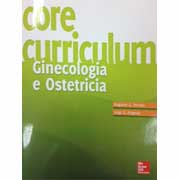241. ORAL GIMATECAN IN WOMEN WITH PROGRESSING OR RECURRING ADVANCED EPITHELIAL OVARIAN, FALLOPIAN TUBE AND PERITONEAL CANCERS
Int J Gynecol Cancer 2006, 16 (Suppl. 3), 624–694
In coll. S. Pecorelli1, I. Ray-Coquard2, N. Colombo3, G. Parma3,
G. Tognon1, D. Katsaros4, C. Lhomme5, A. Lissoni6, J.B. Vermorken7,
A. du Bois8, A. Poveda9, L. Frigerio10, J.P. Guastalla2 1Universita` Degli Studi, Brescia, Italy; 2Centre Le´on Be´rard, Lyon, France; 3Istituto Europeo Di Oncologia, Milan; 4Universita` Di Torino, Turin, Italy; 5Institut Gustave Roussy, Villejuif, France; 6Ospedale San Gerardo, Monza, Italy; 7Antwerpen University Hospital, Edegem, Belgium; 8HSK Dr-Horst-Schmidt-Klinikum, Wiesband, Germany;
9Instituto Valenciano De Oncologia, Valencia, Spain; 10Ospedali Riuniti,Bergamo, Italy
Background and Aims: Gimatecan is a potent oral topoisomerase I
inhibitor.
Methods: The antitumor activity of gimatecan in advanced epithelial
ovarian, fallopian tube and peritoneal cancers (AOC) was
evaluated in a multicenter two stage Simon design phase II study.
Eligibility: Women with AOC presenting progression or recurrence
of their disease after platinum and taxanes, progression-free interval
(PFI) from last platinum-based therapy , 12 months, disease response
evaluable by RECIST or by CA 125 (GCIG criteria) and
ECOG PS _ 1. Gimatecan 0.8 mg/m2 was administered for five consecutive
days every four weeks. Response was assessed every two
cycles by CT scan and/or monthly by CA125.
Results: 69 women were treated, enrolled from June to December
2005; as of May 2006 22 patients are still ongoing. Median age was
61 (range 37 - 79). Number of prior chemotherapy regimens was: 1
in 29%, 2 in 49%, 3 in 22% of patients (pts). Overall response rate
(based on both RECIST and CA125) was 17% (12/69 pts); it was
36.8% (7/19) in pts with PFI _ 6 months and 10% (5/50) in pts with
PFI , 6 months. Responses measured by CA125 only were seen in
17/54 pts (31.5%), and the activity was seen both in pts with PFI , 6
and _ 6 months. Main toxicity was hematological, with thrombocytopenia
G3/4 in 18% pts and neutropenia G3/4 in 30%; gastrointestinal
toxicity was negligible.
Conclusions: Gimatecan administered as oral single agent showed
an interesting level of activity and an acceptable level of toxicity.
